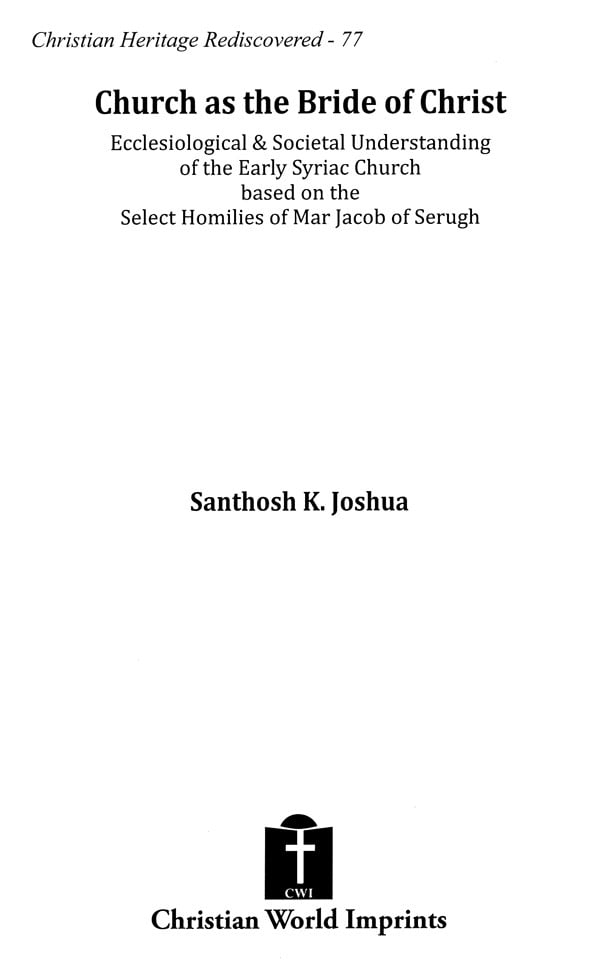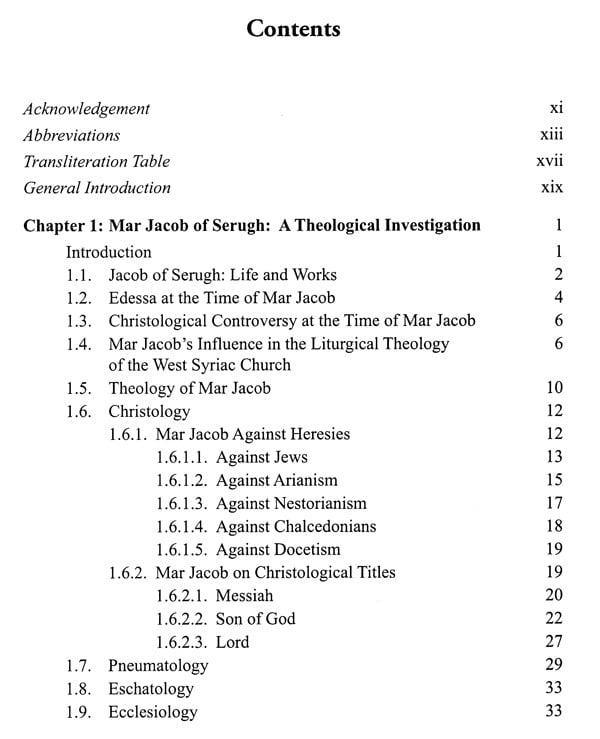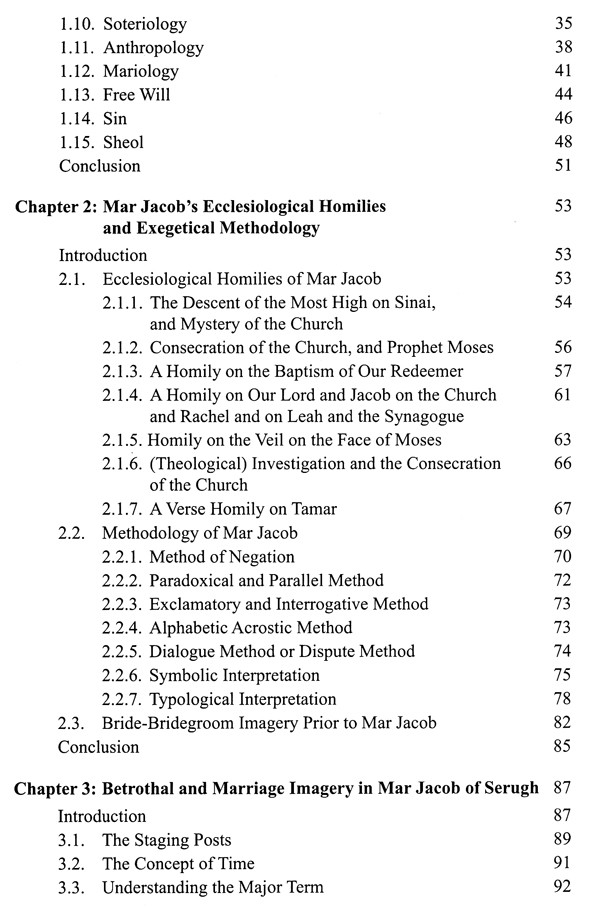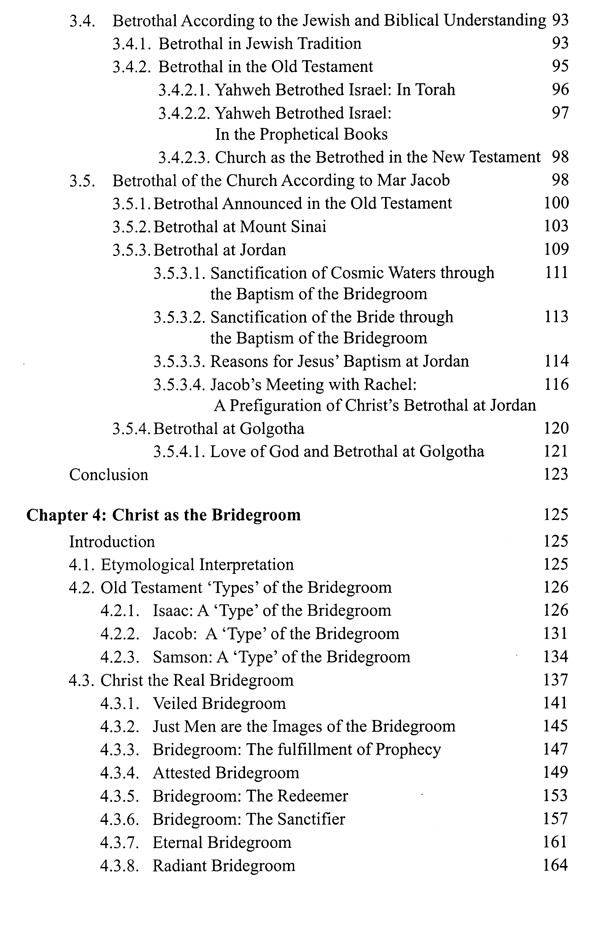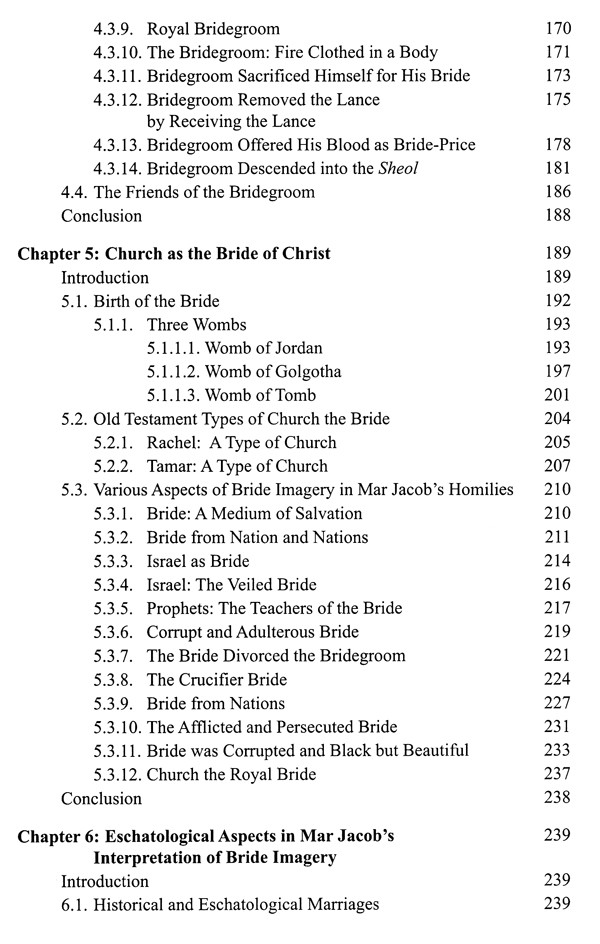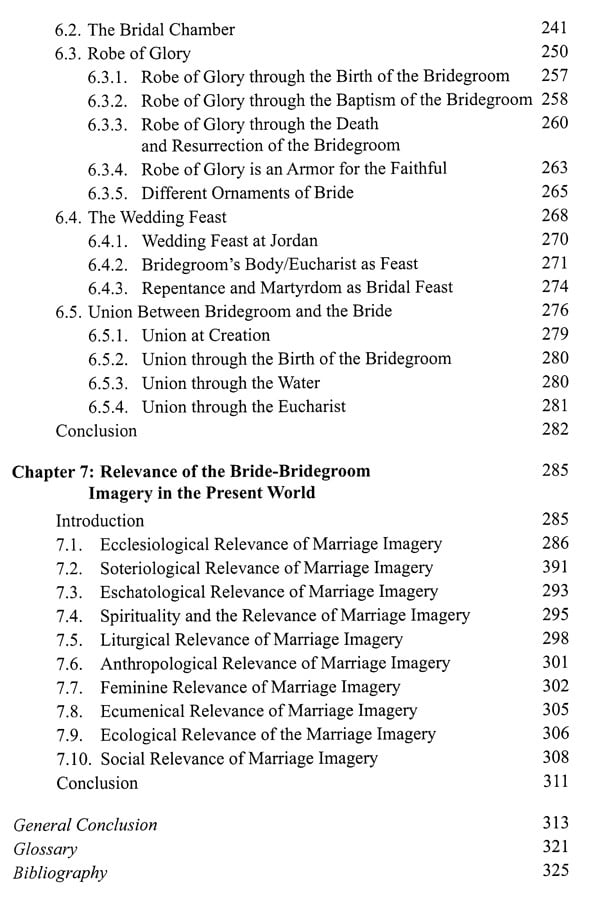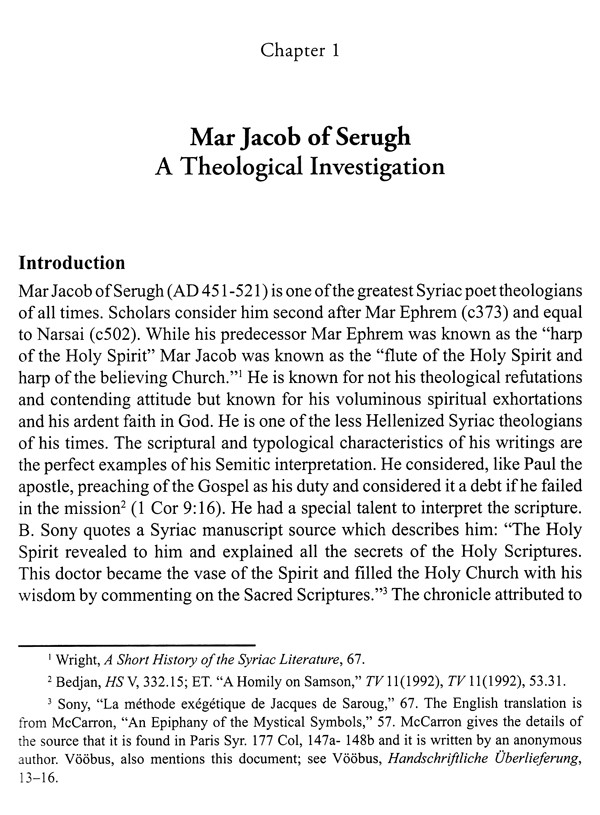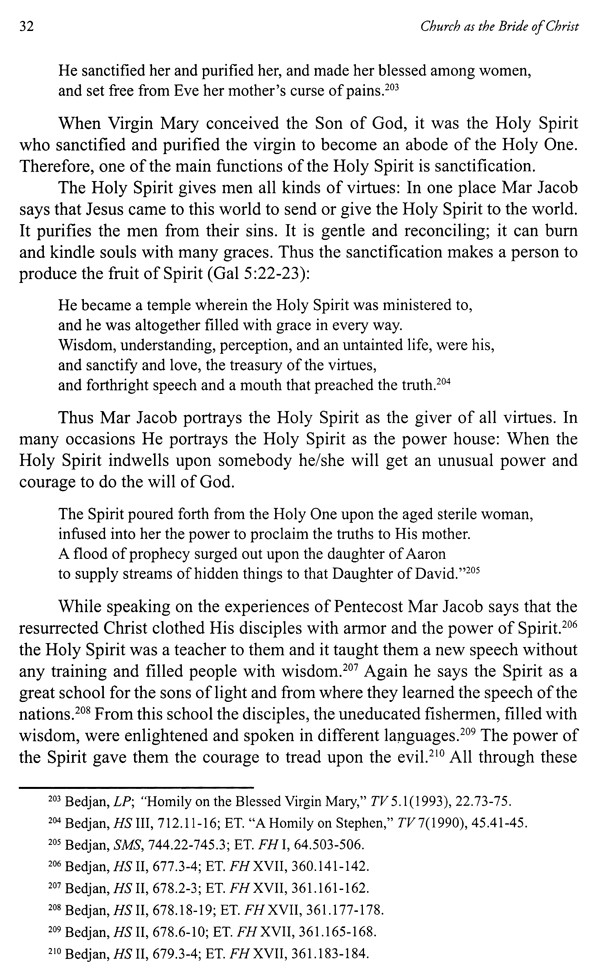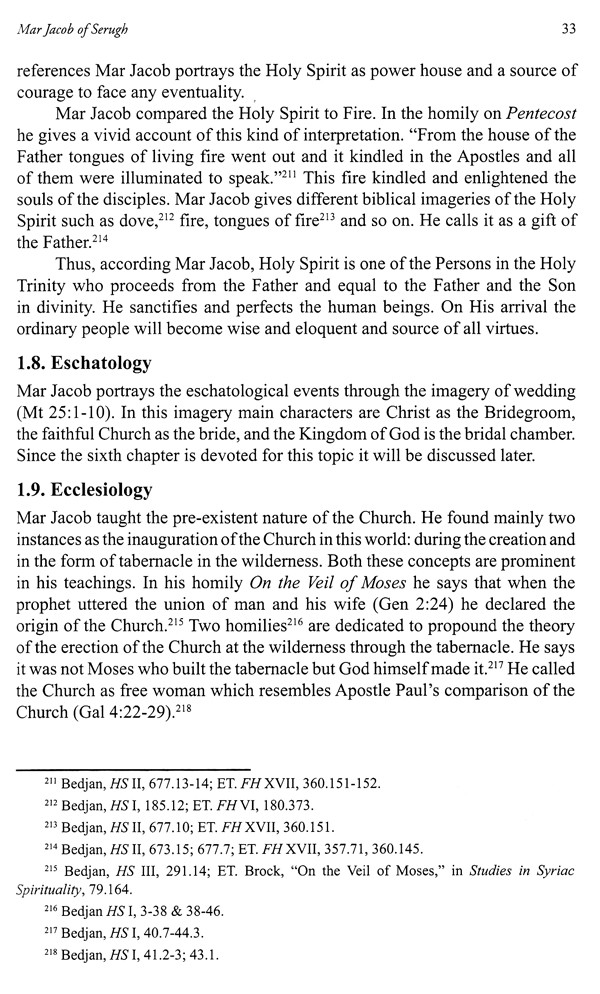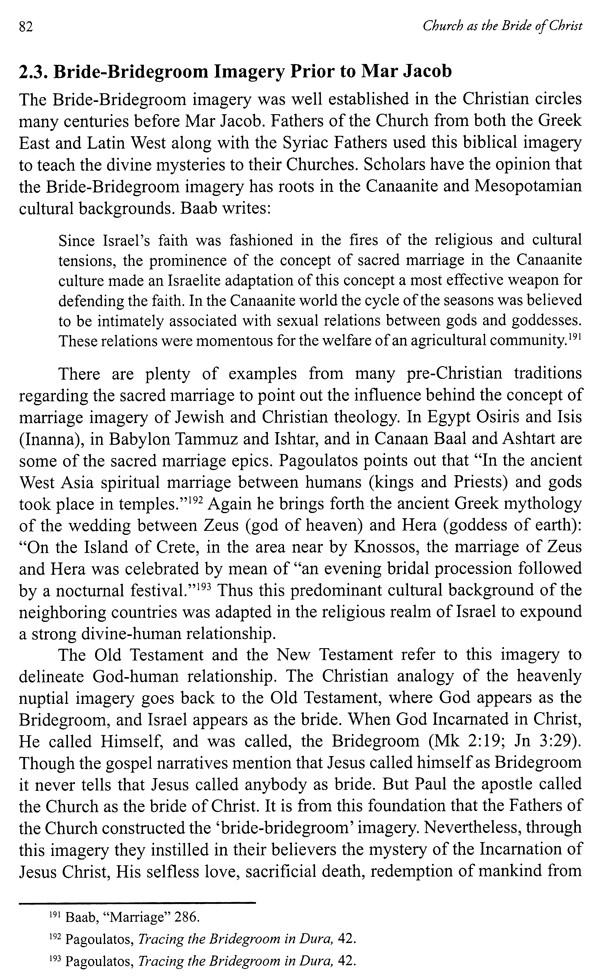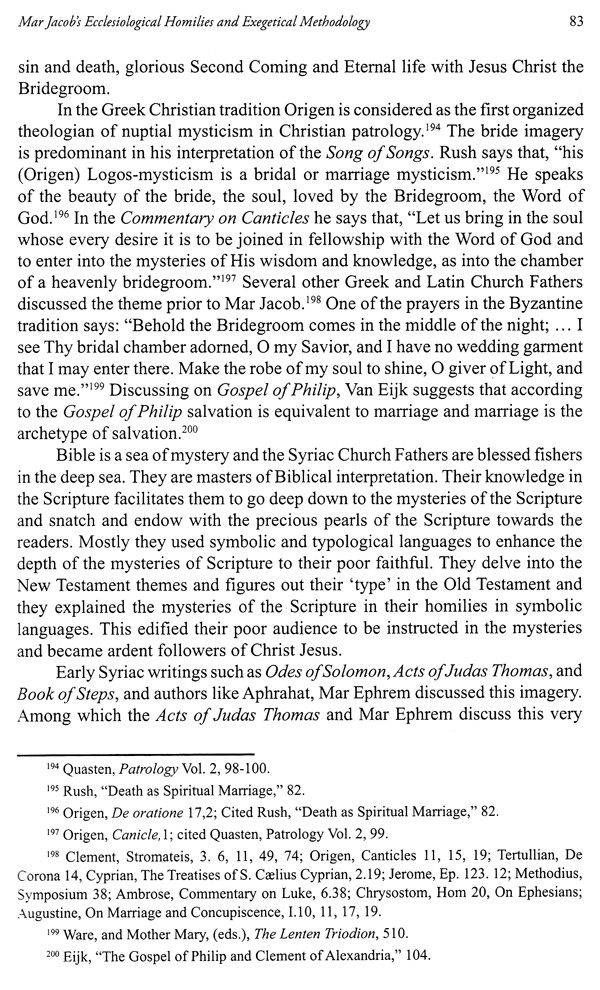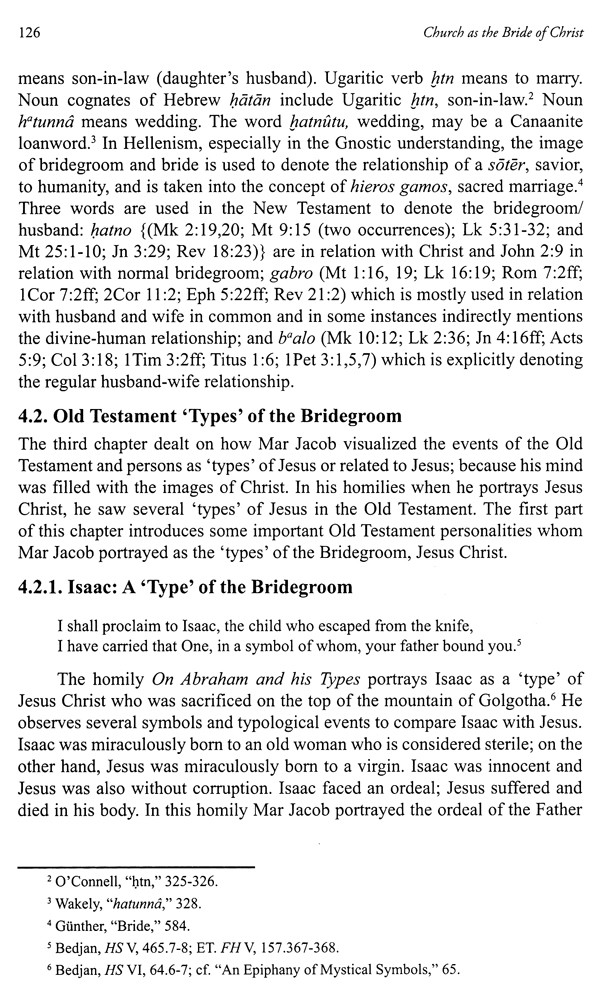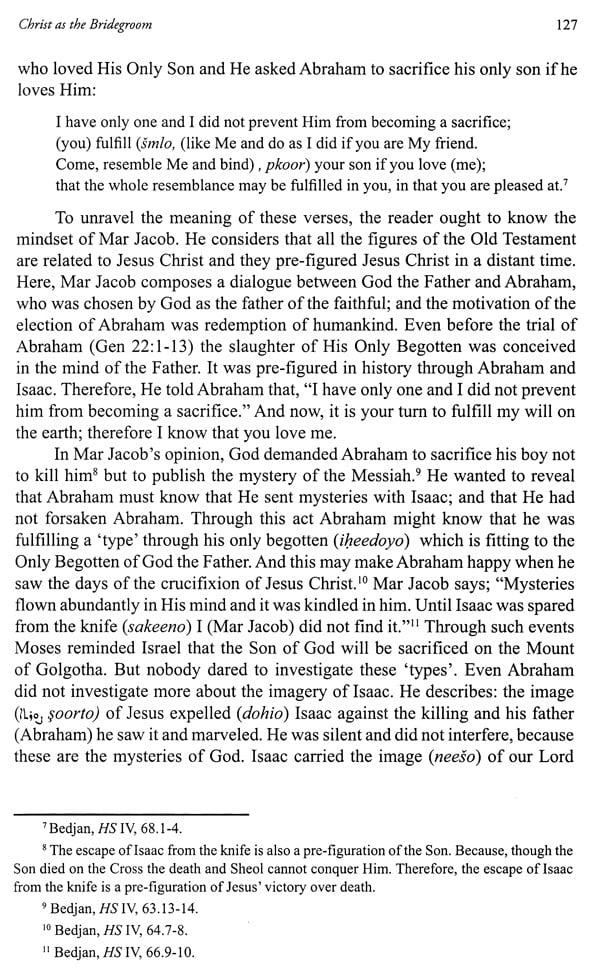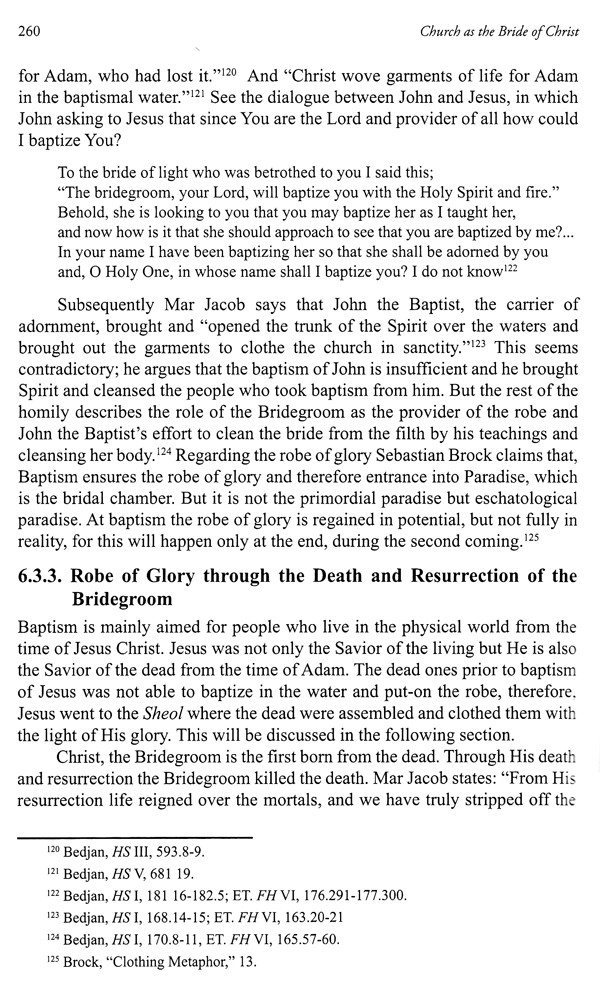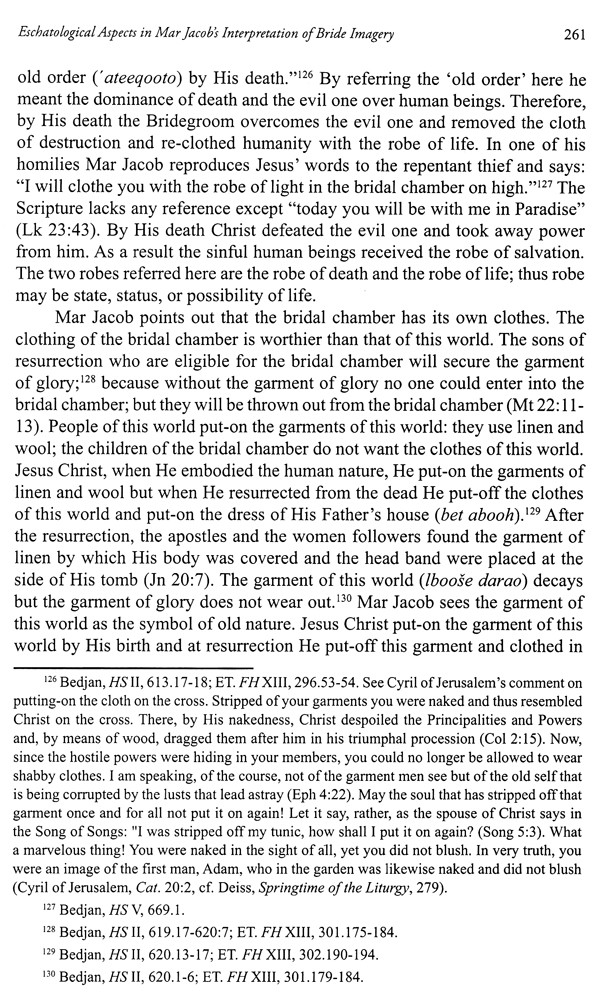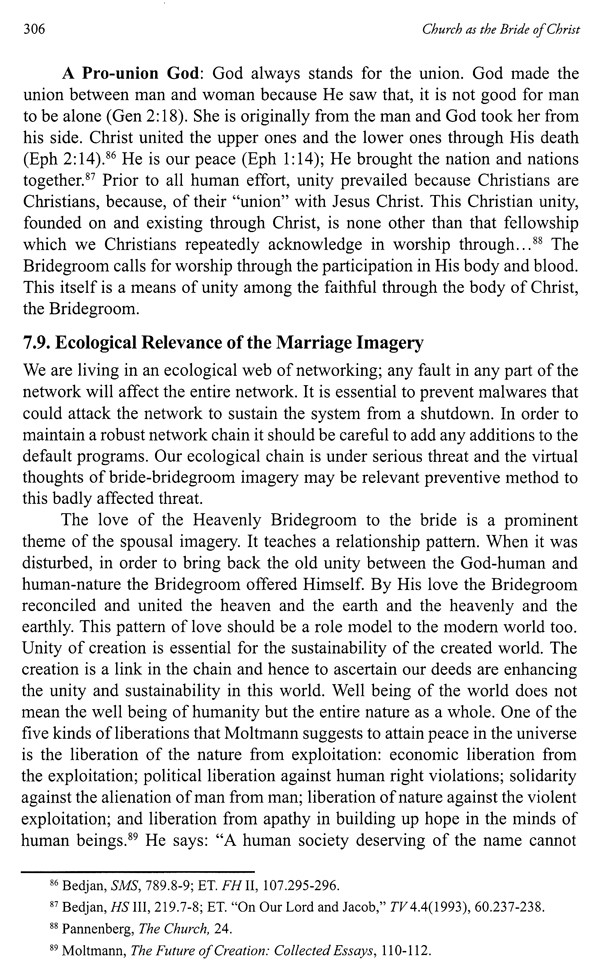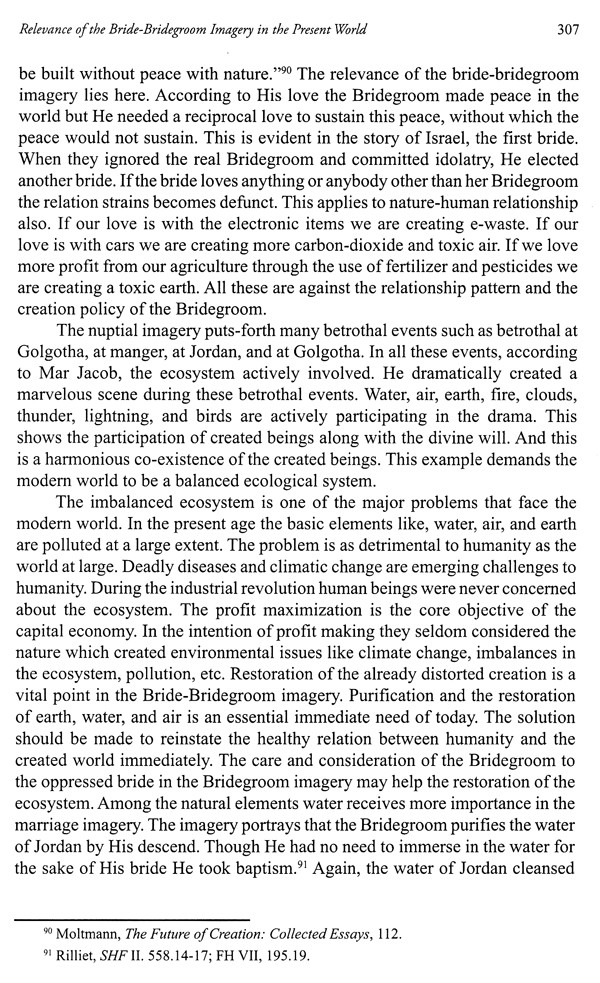
Church as the Bride of Christ (Ecclesiological & Societal Understanding of the Early Syriac Church based on the Select Homilies of Mar Jacob of Serugh)
Book Specification
| Item Code: | UBA409 |
| Author: | Santhosh K. Joshua |
| Publisher: | Christian World Imprints, Delhi |
| Language: | English |
| Edition: | 2020 |
| ISBN: | 9789351483496 |
| Pages: | 379 |
| Cover: | HARDCOVER |
| Other Details | 9.00 X 6.50 inch |
| Weight | 590 gm |
Book Description
Unlike its western counterpart, oriental theology is not systematic or philosophic. Fluid and complex in nature, it is more Biblical and spiritual. Oriental theologians use unique imagery and typology to interpret their religious teachings. They also often use hymns as pedagogical instruments to present their ideas. Jacob of Serugh was one of the foremost Syriac poet-theologians of this kind. Second in stature only to Ephrem the Syrian, he too used images and types to demonstrate his ideas.
This book is a study on Jacob of Serugh's vision of the Church with special reference to how he interpreted the Church as the bride of Christ. The poet-theologian extensively borrows types and images from the Old Testament to explicate Christ's redemptive activities. Through the image of the bride, he emphatically explains the love of God for the humankind.
Fr. Dr. Santhosh K. Joshua was born in the village of Chenneerkara in the Pathanamthitta District of Kerala. Having finished his college education, he joined Mar Baselios Dayara (Monastery), Njallakuzhy, Kottayam. After intensive training at the Orthodox Theological Seminary, Kottayam, he became a priest of the Malankara Orthodox Church in 2002. Thereafter, he served many parishes. including some in the U.S.A. Continuing his education; he secured four masters degrees and a Ph.D. from Dharmaram Vidya Kshetram, Bengaluru. He translated the Promiyons and Sedres of the Three Days' and Forty Days' Lents and 'the Book of Common Prayers' into English. Currently, he serves as a visiting Professor at St. Thomas Orthodox Seminary, Nagpur, India.
Syriac is one of the major dialects of Aramaic. At least from the sixth century BC Syriac was the lingua franca of the whole West Asia till it gave way to Arabic in the seventh century AD.' Syriac language was developed in and around the city of Edessa or Urhai, a city of the little kingdom Osrhoene, in successive stages. Syriac language produced a large number of works in various disciplines such as religion, science, medicine, astronomy and so on. Theological genre contributes a lion's share of Syriac literature and is truly a great treasure house of knowledge of the East. Syriac is the liturgical language of the Syriac speaking Churches and of some of the Churches in the Indian subcontinent. For many centuries the Western Christian scholars were either unaware of this rich treasure or ignored them.
Jacob of Serugh is one of the prominent Syriac religious poets. He was, for a long time, a Corepiscopos and finally the bishop of Betnan of Serugh in modern Turkey. The scholarly world has accepted his prodigy in religious teachings and his interpretation of the Scripture and started serious studies on his works. Most of the early studies were made on his Christology and Christological position. Now it is generally accepted that in spite of his strong independent stand in Christological debates of his times, he was not a controversialist but only a spiritual theologian and a teacher. The Lazarist priest Paul Bedjan' edited a good number of his homilies. The recent translations of his Memre (verse homilies) brought more insights into his teachings. These made him popular like his predecessor Mar Ephrem. His typological interpretation received much attention from the ordinary believers and made his homilies popular. Unlike those who look for rational interpretation, the twentieth century postmodernists, who prefer life experience, are attracted by the fluid and unsystematic but deeper and penetrating spiritual interpretation of the Semitic Church. Such a shift in the reading of the academic world is a blessing to the Syriac theology too. As a result many scholars, especially from the West, have started studying the writings of Mar Jacob and became popular among the orientalists.
1. Theme of the Study
The present study is based on one of the favorite themes of Mar Jacob, "the Church as the Bride of Christ." This is a typological interpretation, which expounds the God-human-nature relationship. Through this theme he elaborates the understanding of the early Syriac Church on creation, sin, Holy dispensation of Jesus Christ and the salvation of humankind. The paradigm of God-human-nature relationship is at stake in the present world due to several reasons. The present era of consumerism and globalization" has brought about changes in the perspectives of the ideological and pragmatic areas. This has created breakups in the harmonious relationships and the elimination of many local, aboriginal and indigenous cultures. At this juncture, the researcher finds Jacob of Serugh's exhortations "the Church as the Bride of Christ" a refreshing paradigm capable of reinvigorating the relationship hazards.
2. Importance of the Theme
Through this theme Mar Jacob delineates God-human relationship from the time of creation. And this relationship is built upon the rock of love of God towards humankind. On the other hand the chosen bride, the Israelites, were unfaithful and rejected the Bridegroom, Christ; therefore, He elected another bride, the Church, who was 'blackened with the fume of idolatry.' Through this theme Mar Jacob portrays the loving, forgiving, and self-emptying God who is a model for today's selfish and disintegrated world.**Contents and Sample Pages**
